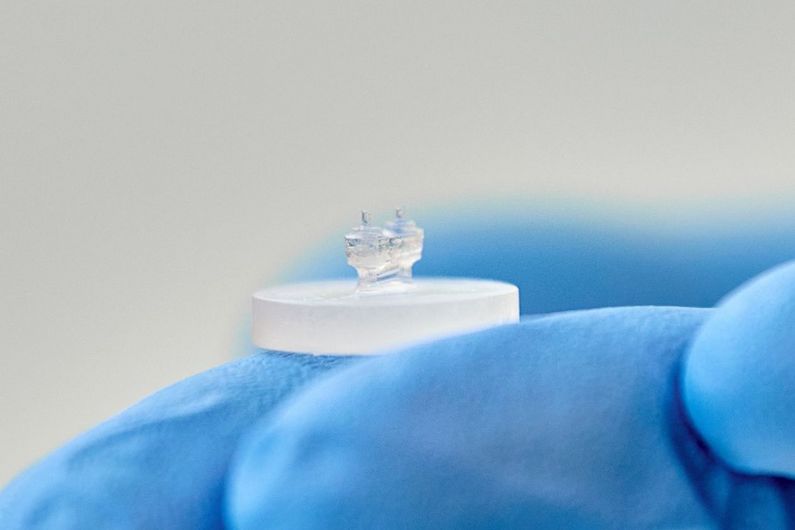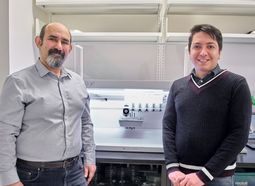A "heart on a chip"
- Salle de presse
02/14/2024
Developed in Montreal, the device – a 3D-bioprinted, miniaturized chip – promises to advance understanding of cardiovascular disease and aid in the development of new precision treatments.
Scientists at the Centre de recherche Azrieli du CHU Sainte-Justine, affiliated with Université de Montreal, have developed a device that accurately simulates the electrical activity, mechanics and physiology of a human heart.
Dubbed a "heart on a chip," it's been 3D-bioprinted using a bioink and promises to aid in better understanding the specific nature of individual cases of heart disease, as well as develop new treatments and accurately assess their efficacy in an automated, high-throughput manner.
Developed by a team led by UdeM pharmacology professor Houman Savoji and doctoral student Ali Mousavi, the device and its bioink are described in a study published in the journal Applied Materials Today.
Since the heart is a vital organ, its activity can't be directly analyzed "live" at the cellular level. Hence the usefulness of the "heart on a chip," a sort of ring-shaped tissue made up of the patient’s own cells, mimicking as closely as possible the complexity of the human heart.
These devices are usually produced individually in laboratories in a non-standardized way.
“Our research has made it possible to combine 3D bioprinting technology to produce standard hearts-on-a-chip much more quickly and precisely,” said Savoji. “What’s more, our results show that printed devices perform better than those produced manually.”
The ring-shaped heart tissues are printed with a bioink containing a patient's stem cells.
“We've formulated a bioink that best reproduces the properties of the heart, such as elasticity and electrical conductivity, and has suitable properties required for 3D bioprinting,” said Mousavi, the study's first author, who's doing his PhD at the Institute of Biomedical Engineering.
The device opens up new prospects for the identification of new drugs, he added.
“The next step will be to compare healthy and diseased heart cells to develop solid cardiac pathology models. That will also let us safely and accurately test the effect of new therapeutic molecules on cells.”
The ultimate goal is to be able to use the cells of cardiac patients to model their heart disease and validate the efficacy of treatments available for their condition – a big step towards personalized medicine.
About this study
“Development of photocrosslinkable bioinks with improved electromechanical properties for 3D bioprinting of cardiac BioRings,” by Ali Mousavii et al, is published in the February 2024 issue of Applied Materials Today. The project was funded by the Natural Sciences and Engineering Research Council, the Fonds de recherche du Québec - Santé and TransMedTech Institute. Ali Mousavi is also the recipient of a doctoral research grant from Fonds de recherche du Québec – Santé.
Media contact
-
Danika Landry
CHU Sainte-Justine -
Jeff Heinrich
Université de Montréal
Tel: 514 343-7593














